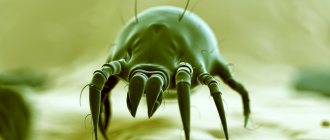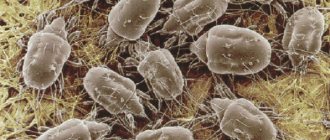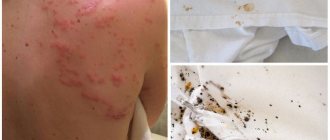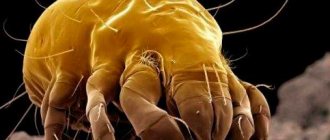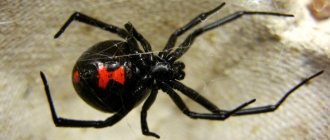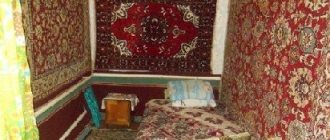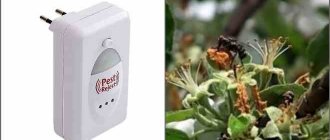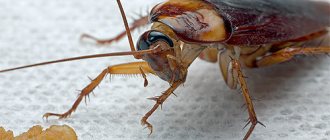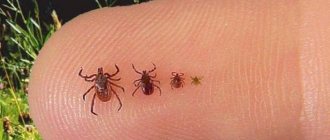If you sleep alone, you may sometimes feel lonely. Don't feel sorry for yourself, you are not alone in bed. Wherever you lie down, they are always with you - dust mites.
With the advent of the Internet, people have become more likely to share observations about pests, fueling scientific myths. And now we’re not just talking about giant rats in the subway.
Another viral horror story is the dust mites that live in our beds. Have you heard of this one?
After about 10 years of use, your mattress can become twice as heavy due to the accumulation of dust mite droppings.
Or about this one?
At least 10% of the weight of a non-new pillow is dust mites and their excrement.
Nobody wants to go to bed covered in feces. Especially dust mites. This event can develop from a frightening nuisance into a waking nightmare. It all depends on the sensitivity of your nervous system.
But those who produce and sell mattresses and pillows love such pseudo-scientific facts. They increase their profits.
This also includes advice to change pillows and feather beds every six months, or take them to dry cleaning at the same frequency. If you ask a salesperson why you should do this, one of the possible answers will most likely be “to avoid exposure to dust mite waste.”
But how much truth is there in this? And what exactly are these dust mites?
What do dust mites look like?
Dust mites are round creatures with tiny hairs on their bodies and legs. They are painted in a bright cream color or transparent.
House dust mites are barely visible to the naked eye. The mite size ranges from 0.1 to 0.5 mm and usually requires entomological optical instruments to detect it.
Description of the pest
The bed mite is a parasite measuring 0.1-0.23 mm. In fact, they do not exist separately as a species, being in fact microscopic saprophagous mites (genus dust mites). They are often called dust mites or linen mites, which generally mean the same thing.
Unlike bed bugs or cockroaches, these parasites are not capable of physically causing harm and leaving bed tick bites on the skin. Ideal conditions for accelerated reproduction are 18-25°C and high humidity. The life of one individual lasts approximately 65-80 days. During this time, females manage to make hundreds of clutches, each of which contains up to 60 eggs.
Their miniature size allows them to live without problems in every person’s home. And the best habitat for them is the human bed. Heat, dust, moisture, and the presence of dead skin particles create an ideal environment for them not only to live, but also to actively reproduce.
Most often, bed mites settle in natural-based materials - feather and down pillows, mattresses, duvets, wool blankets. But he also does not disdain synthetics, especially if a person uses the same blanket for a long time without weekly dry cleaning. Therefore, various methods of combating bed mites and methods of treating bedding and surfaces are used, including recipes from folk remedies.
Movement and infection of a room by this parasite occurs due to the transfer of individuals from place to place through clothing, contact with an infected surface, be it someone else’s chair, a hotel bed, or a seat on public transport. Their habitat is very extensive, and therefore no one can say with confidence that there are no ticks in their home.
Bed mites feed not only on human waste, but also on domestic animals. Therefore, caring for them is not just maintaining their beauty, but a necessity. Therefore, bathing and combing should be done regularly, and wet cleaning should become almost a daily ritual in the house.
What do dust mites eat?
Dust mites don't suck our blood like their cousins in the superorder parasitiform mites do. And they don’t even live on the human body like their siblings - subcutaneous mites from the order of sarcoptiform mites.
Dust mites are not parasites because they do not bite or sting.
Their destiny is to be “scavengers”, eating dead human skin cells that he loses in the process of exfoliating his stratum corneum. They also happily eat pet dander, bacteria, fungi and pollen.
These tiny creatures are actually useful because they recycle waste.
How to get rid of the smell of sweat on a mattress using proven means?
To combat unpleasant odors, you can use baking soda, which has absorbent properties . Carrying out such work takes a lot of time and effort, which is due to the size of the mattresses. If you want to test this method, then follow the instructions:
- remove large debris and dust from the product using a vacuum cleaner and cloth napkins;
- take 2-3 packages of soda, 500 g each, generously sprinkle the surface of the mattress, distribute the dry raw materials evenly;
- leave the soda for 48 hours. After the specified period, remove the powder, and then repeat the procedure, treating the second half of the product.
Before work, the area under the bed must be covered with construction film or old fabric, otherwise soda will get into every corner of the room. The procedure is lengthy, it eliminates odors, but not stains . To combat the latter, foam is used, which is distributed over the contamination and left for 30 minutes. After half an hour, the foam should be removed with a soft cloth, and the surface of the product should be steamed using an iron. This method is more effective; it allows for surface thermal disinfection.
Important! If the mattress is high, then sweat, skin secretions, microorganisms and bacteria will remain in its deep layers even after heat treatment.
Why are dust mites dangerous for humans?
Dust mites are like bacteria - they crawl everywhere, you can hardly see them, but the mere fact of their presence is not the end of the world.
Most people are not affected by the presence of dust mites and do not need to worry about them at all.
However, under optimal conditions, the dust mite population grows excessively, and as a result, their excrement can cause allergies and even asthma attacks in some people.
Therefore, people with asthma or allergies may want to take steps to reduce the number of dust mites in their home to minimize harm to their health.
But if you don’t have such problems, don’t worry - these mites are not dangerous for you.
What harm do they do to humans?
It is known that a dust mite bite cannot be found on human skin. This is explained by the fact that they are too small, and therefore simply incapable of this. On the other hand, they constantly feed, and this leads to the fact that they secrete the products of their vital activity. This thesis refers to fecal matter or feces in which special digestive enzymes-proteins are present. These substances help destroy human skin cells so that mites can feed, and then they are also released in the feces of individuals.
Together with dust, a person inhales them (the size of one such feces is on average about 30 microns). Once on the mucous membranes or skin of a person, these substances begin to dissolve and dissolve the cells of the human body. As a result, the immune system begins to react to them as if they were an allergen, provoking a severe allergic reaction, especially if a person is genetically predisposed to it.
Laboratory allergy tests test for dust. If dust mites are present, a person may react to the P1 antigen, causing the corresponding symptoms.
How can you tell if there are dust mites in your home?
The good news is that house dust mites are rare in modern apartments, despite statements to the contrary in the media and advertising.
To understand this, let's face the facts of biology.
These arthropods do not drink water, but absorb it from the environment on the surface of their body. As a result, they dry quickly in a room with low air humidity.
If the room is cool (below +24°C) and the relative air humidity is below 55%, then in such a room dust mites die quite quickly.
An unmistakable sign to determine whether dust mites live in your home is to remember the last time you were electrocuted by objects in your apartment.
The fact is that electrostatic charge can only accumulate in a dry room. If you get mild electric shocks while shuffling your feet on the carpet and touching various objects, then the presence of ticks is unlikely. After all, when there is a lot of static, the humidity is usually low, which means dust mites simply will not survive in these conditions.
In hot, dry places where the constant air temperature exceeds 27°C, dust mites also cannot exist.
In North America, the dust mite problem primarily affects residents living in coastal areas, where temperatures and humidity tend to be higher. And it does not at all affect the population that lives inland or further than 60 km from the coast.
This parallel can be drawn with the residents of Europe and Russia. For example, in Primorye in the Far East, which is characterized by a monsoon climate, the problem with dust mites is especially pressing.
Ways to fight
The consequences of developing an allergy to dust mite waste products can be dealt with by desensitization therapy, including hormonal or antihistamine drugs. But in order not to have to sit on medications for the rest of your life, it is also necessary to begin a widespread fight against dust:
- Heavy blankets, feather beds, mattresses, and pillows should be dry cleaned once a season;
- Items must be ironed while wet on both sides;
- Using only a vacuum cleaner is not enough, and therefore wet cleaning is carried out daily;
- Bedding should be washed once a week;
- It is better to get rid of pile carpets and use homespun or wicker ones instead;
- When choosing furniture, it is better to refuse soft models of sofas, armchairs, and so on;
- It is also worth giving up draping windows with woven materials and purchasing blinds, which are much easier to maintain;
- It is better to keep air humidity within 40%, but not higher;
- The room is ventilated daily;
- Bedding should ideally be replaced with padding polyester or other artificial materials;
- Pets should be groomed regularly (including brushing and washing).
Since dust mites especially love human habitats with a high content of dust and particles of skin, fur, and hair, the first step is to carry out general cleaning. It is necessary to eliminate all places where dust, wool and other debris accumulate, and also look through old cabinets. It is possible that some things have long required airing in the fresh air. The methods of controlling dust pests do not end there.
To make cleaned surfaces unsuitable for further colonization by dust mites, you should wipe them with a special solution. In folk recipes, there is a remedy that many people use at home: add ¼ cup of any liquid soap to 1 liter of water and, after completely mixing, add ½ cup of ammonia. This solution can be wiped over surfaces such as floors, furniture, or added to water when washing.
It is important to realize that only treating bed linen and floors will not give the required results. You need to get rid of dust mites in a comprehensive manner. That is, it is necessary to influence furniture, clothes, soft toys, an animal’s bed, and so on. All dust accumulation areas are treated - from the top of cabinets to baseboards. At the same time, it is necessary to act comprehensively and on all rooms. At the same time, you need to inspect the contents of the cabinets, especially those that are opened no more than once a season - sideboards, pantries, and so on. Dust mites live in them in large numbers, especially if things are folded without being washed.
It is better to get rid of dust mites before serious consequences develop in the form of asthma and its attacks, including anaphylaxis.
Does a mattress really get heavier over time due to dust mites?
Of course not.
You won't find any actual evidence that dust mites and their waste (feces) can add weight to a pillow or mattress.
This misconception became widespread back in 2000 by the editors of The Wall Street Journal. Then an article was published in one of the issues of this magazine, which attracted everyone's attention with a catchy headline, presenting this statement as a scientific fact.
By the way, the expert immediately warned the correspondent that the hypothesis had not been confirmed by research and, therefore, was not supported by official science. But the thirst for sensation outweighed common sense. And it was already too late - other media picked up the false idea, and it quickly spread across the Internet.
Unfortunately, many people still readily believe him.
Insecticide treatment
If bed mites have not yet had time to multiply en masse, then general cleaning will be enough, otherwise you need to use special products:
- "Tsifoks" is a concentrate with an insectoacaricidal effect. The active ingredient of this drug is cypermethrin, which has an effect within half an hour after use. It must be applied to the body of upholstered furniture, walls, floors, baseboards and carpets. Consumption of the drug: 50 ml of aqueous emulsion per 1 sq. m.
- "Sipaz-Super" is an analogue of "Tsifoks".
- "Acaritox" is an acaricin and a broad-spectrum insecticide with alphacypermethrin. It is a powder that dissolves in water. The drug is used to treat furniture, floors, walls and baseboards; it is not suitable for linen.
- Aerosol “Hexal AG Milbiol” is a drug with a natural composition based on neem plant oil. The environmentally friendly and safe composition allows the product to be used for treating bed linen, pillows, mattresses, blankets and children's toys. The disadvantage is an unpleasant pungent aroma reminiscent of garlic or onion.
- “Easy Air” spray is a product that removes not only mites, but also allergens. It needs to be sprayed on the bed and bedding. Consumption: 1 liter of spray per 50 sq. m.
- Allergoff laundry additive consists of 30% besyl benzonate. It should be added during haircuts; the product helps eliminate allergens.
After treating the premises with special preparations, you need to ventilate the premises well, or even better, leave them for a day. Afterwards, you must thoroughly wash all treated surfaces using disinfectants, for example, bleach.
Preparations to combat bed mites
A good option for eliminating parasites is winter with severe frosts. In this case, you can take pillows, blankets and other similar items related to the bed out into the cold for several hours. Summer “roasting” in direct sunlight is no less successful. But special insecto-acaricidal preparations will help completely destroy the population of bed mites.
The drugs help cope with various kinds of parasites in several applications. Their protection against pests of this type lasts up to 1.5 months. When the bed mite is eliminated, it is easier to carry out the usual prevention in the form of the previously mentioned tips.
Where do parasites live?
Ticks develop and reproduce at humidity levels greater than 50% and air temperatures of 22-26 degrees Celsius. Most of all they love “deposits” of dust. Such places could be:
- cabinets with bookshelves, books themselves;
- soft toys for children;
- carpeted floors, shoes, especially old ones.
Dust mites can be found in wool blankets, furniture upholstery, and any other fuzzy indoor surfaces. Most of them are found in pillows, especially feather or down ones, and it is very difficult to get rid of them. It's easier to change the pillow.
More information about the habitat of dust mites can be found here.
How do you know if you are allergic to house dust mites?
This type of allergy can be suspected if the condition clearly worsens upon contact with house dust (for example, when making the bed, sweeping the floor, knocking out carpets or removing curtains), if the periods of deterioration coincide with the periods of active mite reproduction, if it becomes bad in rooms where there are a lot of carpets and objects that accumulate dust (including animal skins, soft toys, heavy curtains, etc.). Manifestations can be different:
allergic rhinitis, most often year-round, allergic conjunctivitis, atopic dermatitis/eczema, bronchial asthma. Those. manifestations depend on which organ reacts more: skin, mucous membranes of the eyes, nose or bronchi. To clarify the diagnosis, you should contact an allergist and undergo an allergological examination, which includes skin tests and an analysis for the presence of antibodies to a given allergen in the blood (RAST - radioallergosorbent test - or other methods).
Preventive measures
In order to prevent the appearance of harmful organisms, it is necessary to constantly carry out the following measures:
- Treat mattresses, pillows and blankets with special chemicals (acaricides);
- In frosty weather, take bedding outside every day and keep it in the open air for at least one hour;
- It is necessary to wash bed linen in water whose temperature is not lower than +50°C
- Make efforts to ensure that there is as much sunlight as possible in the apartment, and especially in the bedroom. Ultraviolet light is harmful to parasites
- If possible, clean using vacuum cleaners with an aqua filter. Bagged vacuum cleaners should be avoided.
- Equip your home with air conditioners and air purifiers that will capture the smallest dust particles.
In conclusion, it should be said that the appearance of such dangerous “roommates” in an apartment as dust mites is much easier to prevent than to then take drastic measures to get rid of them.
Therefore, it is worth introducing into a good habit the preventive measures listed in this article against the appearance of parasites, so that in the future you will not have to seek help from doctors and restore the damaged health of both adult family members and children.
